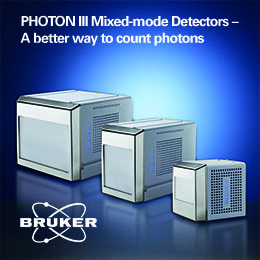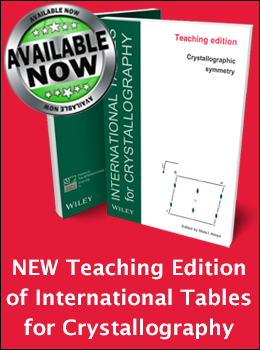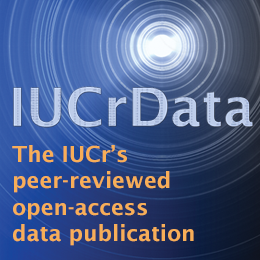


Feature article
History of ferroelectrics – a crystallography perspective
![FerroelecSpaldinThumbnail [FerroelecSpaldinThumbnail]](https://www.iucr.org/__data/assets/image/0019/152515/Ferroelec-Spaldin-Thumbnail.png)
“Underlying the whole treatment is the assumption that the physical properties of a solid are closely related to its structure, and that the first step to understanding the physical properties is to understand the structure” – Helen D. Megaw [1]
The year 2021 marks the 100th anniversary of the discovery of the phenomenon of ferroelectricity, defined to be a spontaneous electric polarization that is switchable by an applied electric field. This is a wonderful centennial for crystallographers to celebrate because it is a property of crystals in which functionality and structure – specifically the existence of a polar axis – are intimately related. The key characteristic of a ferroelectric is a hysteresis loop of polarization versus electric field; we reproduce the data from the original discovery by Joseph Valasek in Fig. 1 [2]. The similarity with the magnetization behavior of ferromagnetic iron in a magnetic field is clear – just like the well-known hysteretic magnetic field induced switching between the two stable states of opposite magnetization in a ferromagnet, a ferroelectric material has two stable states of opposite electric polarization associated with opposite relative displacements of its anions and cations – and it’s this analogy that gives ferroelectrics their name, in spite of the fact that most of them are not ferrous! We’ll see in this article the key role played by crystallography in the evolution of ferroelectrics (a timeline of key discoveries is shown in Fig. 1), starting from the identification of polar materials, through establishing the nature of ferroelectric phase transitions, to providing crucial information for the development of today’s accepted theories of ferroelectric polarization.
1. Beginnings
We begin our story in 300 BC, when Theophrastus, the successor to Aristotle in his School of Philosophy, made an early mention of the electrostatic behavior of certain rocks in his treatise On Stones. Particularly intriguing is his report that “lynx-urine stone” (lyngourion) is better able to attract bits of straw, wood and metal if the stones are derived from wild male lynx because of their superior diet and exercise regime [4]. The behavior he described is known today as pyroelectricity and has the same crystallographic symmetry requirement as that of ferroelectricity – the presence of a polar axis – although not all pyroelectrics are switchable by an applied field. For a discussion of the early history of the electrostatic behavior of pyroelectrics, we refer the reader to reference [5].
The first genuine crystallographic study of the pyroelectric effect occurred in 1785, when Abbé René Just Haüy, affectionately referred to as the father of crystallography [6], turned his attention to the unusual pyroelectric behavior of the mineral tourmaline. The Abbé had by this time established basic laws of crystal form and symmetry through painstaking fragmentation of minerals to reveal their underlying crystallographic planes and angles. He, therefore, set about relating the pyroelectric behavior of tourmaline to its crystalline structure. First, he showed that the electricity in tourmaline was strongest at the poles of the crystal and became imperceptible at the middle, although when divided each new sub-crystal again had electricity at its poles. He also established that the existence of pyroelectricity correlates with an absence of symmetry in the crystal, which we now know provides the polar axis. In an early example of rational materials design, his finding led him to discover the effect in a number of other minerals. Charmingly, when his colleagues secured his release from imprisonment during the French Revolution, he was so absorbed in a crystallographic study that he refused to leave the prison until the next morning. We encourage PhD students to reflect on this on Friday afternoons, although we should perhaps disclose that the prisoners who remained were guillotined the following week.
2. Rochelle salt
Haüy’s flurry of discovery of new pyroelectrics was continued in particular by David Brewster, who, significantly for our discussion, identified pyroelectric behavior in sodium potassium tartrate tetrahydrate, more commonly known as Rochelle salt [7] [Fig. 1(a)]. First made in the 17th century by adding sodium hydroxide to the tartar residue left in wine barrels, Rochelle salt was developed by the Seignette pharmaceutical dynasty of La Rochelle for use as a laxative. Thankfully, these authors can not comment on its effectiveness in this application.
In the century after pyroelectricity was identified in Rochelle salt, a substantial body of experimental observations on this material accumulated. Some of the findings, particularly an anomalously large dielectric permittivity and electro-optic Kerr effect [8, 9], as well as hysteresis both in the piezoelectric response with pressure [10] and in the capacitance with charging direction [11], suggested an electrical resemblance to the ferromagnetic properties of iron [12]. Valasek set about exploring the analogy by measuring the charge on the plates of a Rochelle salt capacitor – a proxy for the polarization of the material – as a function of applied electric field. This simple experiment led him to discover the hysteresis of polarization with applied field, reproduced in Fig. 1 [2], which is strongly reminiscent of the magnetization – magnetic field behavior of a ferromagnet. Sadly, there was a resounding lack of interest given such a remarkable result, in part because Rochelle salt is unstable against dehydration and the results were not reproducible, and also because the behavior was not understood. Theoreticians were confounded by the crystal symmetry, which was incorrectly assigned on the basis of morphology to a non-centrosymmetric but non-polar space group. With 112 atoms per unit cell, a full X-ray crystal structure determination was attempted only 20 years later [13]. Even more unfortunately, the X-ray structure, being transparent to the symmetry-lowering water molecules, confirmed the incorrect assignment! {Not until decades later, when the first neutron diffraction structure on single crystals showed the positions of the polar water molecules that line up to provide the polarization, was the correct polar symmetry identified [14].} And a peculiar behavior observed in only one badly behaved material offered only a rather rickety bandwagon for researchers to jump onto.
![[Fig1timeline]](https://www.iucr.org/__data/assets/image/0014/153023/Timeline2.png)
3. The development of ferroelectrics in the 20th century
The lonely situation improved somewhat in 1935, when ferroelectricity was identified in a second, more tractable material, potassium dihydrogen phosphate, KH2PO4 or KDP [17]. (Note that the authors called it a seignette-electric in homage to the La Rochelle Seignettes.) In this case, the crystal structure, except for the hydrogens, had already been determined using X-ray diffraction [18], and later neutron studies found the hydrogen positions [19] and showed that their ordering triggered the onset of ferroelectricity.
The most significant breakthrough for the field, however, had to wait until the Second World War, when materials with high dielectric constants were in demand as capacitor components in devices for military communications and detection. One such proprietary condenser sent to the UK Government from the United States mysteriously found its way into the Philips Materials Research Laboratory in Surrey, where it was pulled apart to yield a sample of barium titanate ceramic. Dielectric measurements quickly revealed a very high and temperature-dependent susceptibility, with a number of peaks suggestive of phase transitions. Powder X-ray diffraction was performed by Helen Megaw, who found a tetragonal structure at room temperature and the ideal cubic perovksite structure above 120◦C [20], about which she writes “I can still remember my thrill of pleasure in the darkroom when I looked at the photo and saw that the lines were those of a simple cubic material!” [21]. Soon after, ferroelectric hysteresis was measured [22] and single crystals were produced [23]. A robust material, with only five atoms per unit cell and ferroelectric properties, at room temperature, barium titanate BaTiO3 and related compounds were almost too good to be true, allowing for detailed characterization as well as theoretical modeling. In particular, lead titanate PbTiO3, which displays a relatively simple transition from the paraelectric cubic phase to a ferroelectric tetragonal phase just below 500◦C (Fig. 2), remains one of the highest-performing ferroelectric materials to date. Collectively, the ferroelectric titanates form the basis of an enormous industrial enterprise, with applications as diverse as transducers, capacitors, data storage and computer memories [24].
![[Fig2PbTiO3]](https://www.iucr.org/__data/assets/image/0003/152517/Fig2PbTiO3.png)
Crystallographic measurements of the detailed atomic positions in BaTiO3 were essential in developing the theory of ferroelectricity. In particular, the rather small displacement of the positively charged Ti ion relative to the negatively charged oxygen ions [25] showed that the polarization arose from rather subtle atomic displacements of the atoms, rather than the reorientation of discrete polar entities, and indicated the importance of the ionic polarizability in stabilizing the ferroelectric state [26]. This understanding enabled, in turn, the development of the so-called soft-mode theory of ferroelectricity [27], which recognizes that a crystal is only stable if displacements of its ions result in restoring forces that push them back to their starting positions. As the crystal approaches a phase transition, these forces become weaker, and the frequency of the corresponding atomic vibrations lowers, or softens. In the ferroelectric titanates, it’s the polar phonon corresponding to the Ti–O relative displacement that softens and reaches zero frequency at the phase transition (Fig. 2). Verifying this prediction was, of course, more of a source of excitement for spectroscopists than for crystallographers [28, 29]. With the advent of advanced electronic structure methods and improved computing capabilities, a full first-principles/statistical mechanical description of the ferroelectric phase transition became feasible and verified the soft-mode picture [30].
Intriguingly, the most significant modern theoretical development – the so-called modern theory of polarization – shows that, in fact, only changes in polarization (for example, between the cubic paraelectric and polar ferroelectric structures) are single-valued, and the general polarization in crystalline solids is in fact a lattice of values [31, 32, 33]. This elegantly closes the loop between experiment and theory, with the concepts of crystallography that were so essential in defining and identifying ferroelectricity also proving relevant in its detailed quantum-mechanical description.
4. Evaluating the history of ferroelectrics
So why did ferroelectricians have to wait until 100 years ago for the emergence of their field? First, from a crystallographic standpoint, the fact that the polar state is usually formed on cooling from a non-polar parent phase leads to the formation of domains of different polar orientations. These polarization textures can be on the scale of tens of nanometers, rendering multidomain crystals difficult to distinguish crystallographically from their centrosymmetric parent phases. In this context, powder diffraction can often be more revealing than single-crystal experiments. Indeed, the advent of the Rietveld method [34], high-resolution X-ray powder diffraction at synchrotron sources [35] and the joint use of X-ray and neutron diffraction [36] have collectively played an invaluable role in advancing the understanding of ferroic materials.
From a technical point of view, crystallographic measurements in finite electric fields are challenging, as (to quote Arthur von Hippel) “the crystallographer has thus to accept the unusual situation that the c axis of the BaTiO3 crystal can be turned around at will by the application of an electric field” [25]. From a practical point of view, the engineering component in the definition of ferroelectricity – that is the ability to switch with an electric field – can not be assessed from knowledge of the crystal structure alone, and indeed before the availability of high-quality thin-film samples the voltages required for switching could be prohibitive.
While much is now understood about the phenomenology of ferroelectricity, there remain many open questions that are particularly relevant to crystallographers. Measurements that probe local structure, such as the use of pair distribution function analysis [37] and aberration-corrected electron microscopy [38, 39], are starting to reveal previously hidden order such as polar nanodomains that are inaccessible to bulk techniques. Exotic non-uniform polarization arrangements reminiscent of skyrmions have been stabilized [40] and incommensurate phases, in which the polar distortions do not match the crystallographic periodicity, identified [41]. In the latter context, a general understanding of why most structural distortions are commensurate is still lacking, and a detailed knowledge of the crystallography of representative incommensurate phases would be invaluable. The excitement in recent decades in the area of multiferroic materials and phenomena has been fuelled by intricate details of crystal structure revealing novel mechanisms for ferroelectricity, such as the improper geometric behavior of YMnO3 [42] or the polar magnetic ordering in Cr2BeO4 [43].
While many ferroelectrics in various crystal classes are now known, identifying new ones remains an active research area. Here, crystallographic databases provide invaluable input to modern high-throughput searches and machine-learning studies. And finally, while ferroelectrics must be electrical insulators so that an external electric field has a chance to switch the polarization, there is considerable current interest in polar metals, sometimes loosely referred to as ferroelectric metals [44], because of their potentially exotic transport and superconductivity behaviors [45].
At its 100th birthday, the field of ferroelectrics is still thriving, with new phenomena and materials continuously being revealed and remaining to be discovered. Doubtless, it will keep us busy for the next 100 years.
References
[1] Megaw, H. D. (1957). Preface to Ferroelectricity in Crystals. London: Methuen & Co. Ltd.
[5] Lang, S. B. (1974). Pyroelectricity: a 2300-year history. Ferroelectrics, 7, 231–234.
[7] Brewster, D. (1824). Observation of pyroelectricity in minerals. Edinburgh J. Sci. 1, 208–214.
[9] Pockels, F. C. A. (1906). Lehrbuch Der Kristalloptik. Leipzig: B. G. Teubner.
[10] Cady, W. G. (1918). Rep. Nat. Research Council.
[11] Anderson, J. A. (1918). Rep. Nat. Research Council.
[12] Valasek, J. (1971). The early history of ferroelectricity. Ferroelectrics, 2, 239–244.
[14] Frazer, B. C., McKeown, M. & Pepinsky, R. (1954). Phys. Rev. 94, 1435.
[20] Megaw, H. D. (1945). Crystal structure of barium titanate. Nature, 155, 484.
[24] Scott, J. F. (2007). Applications of modern ferroelectrics. Science, 315, 954–959.
[26] Slater, J. C. (1950). The Lorentz correction in barium titanate. Phys. Rev. 78, 748–761.
Nicola A. Spaldin is the Professor of Materials Theory in the Department of Materials at ETH Zurich, Switzerland. Ram Seshadri is Distinguished Professor in the Materials Department at the University of California, Santa Barbara, CA, USA.
Copyright © - All Rights Reserved - International Union of Crystallography







